Putting the User First Has Never Been More Important
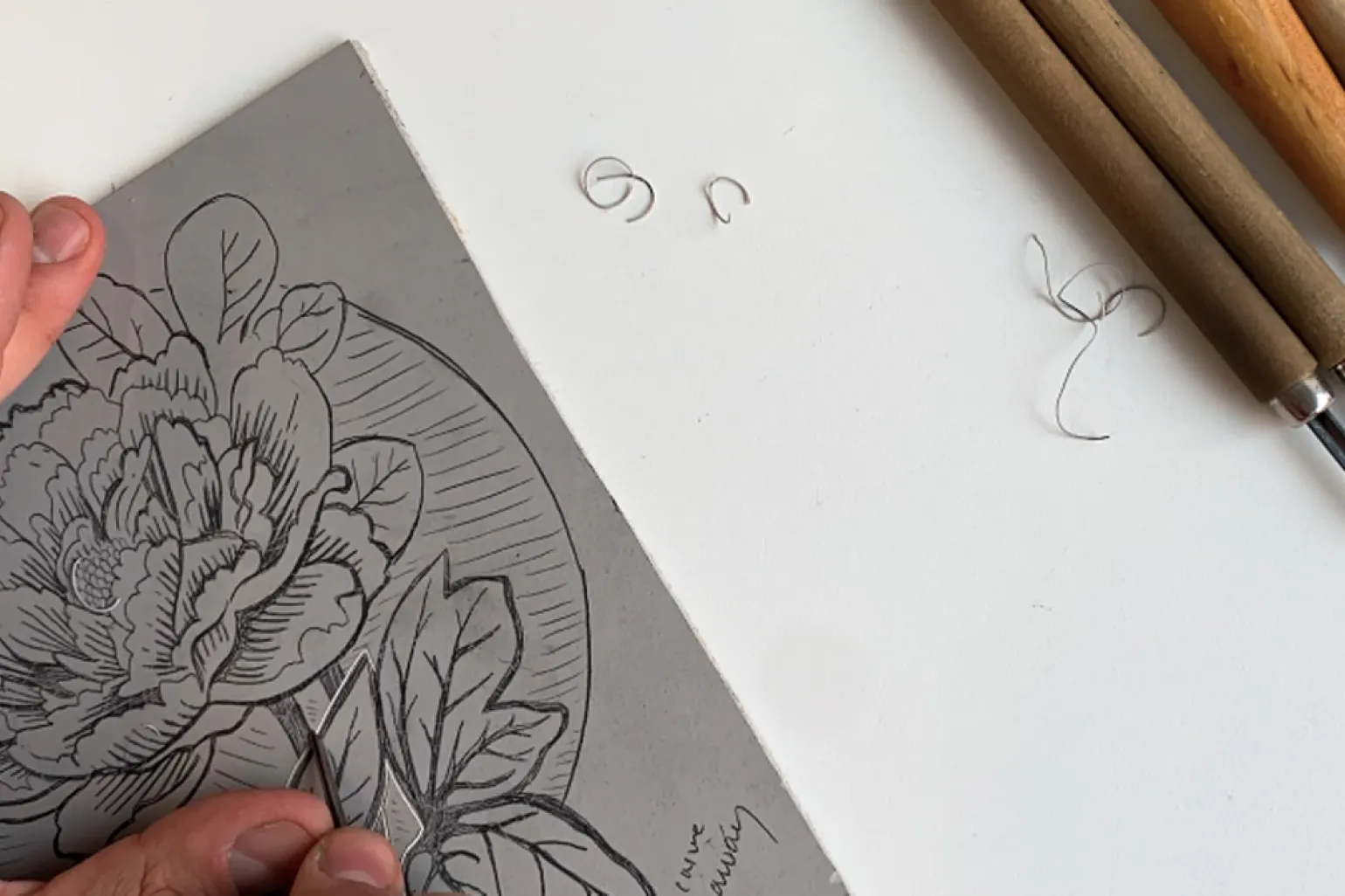
Do you ever find yourself rubbing a piece of fabric or paper between your fingers? Running your fingertips through textures like fur or even patches of long grass? As designers, we observe and learn from our experiences, and we bring these qualities to both our print and our digital projects.
The pandemic and subsequent lockdowns left a lot of us craving human connection and touch, perhaps further amplified by the cold, slick devices we utilize to stay connected. Putting the user first and designing solutions around what they need has never been more important. You may have noticed packaging textured to evoke a sense of luxury, or perhaps an eco-friendly aesthetic reassuring you that you’re making a good choice for the wellbeing of the environment. Each outcome is thoughtfully designed to provide the user with feedback. For example: that button that animates when we tap it, the click we hear when the lid is closed properly, or the soft wool that will feel comfortable on our skin. The emotional responses differ with each individual but are often tied to memories, personal experiences, or just a gut reaction.
Digital applications of design, in particular, require careful consideration. With all the tapping, scrolling, and clicking we do while consuming large volumes of information, making the experience engaging and human-centered is an ongoing challenge.
We can find the humanity in our design experiences by looking to tried and tested systems in our past for clues, learning from techniques that produce patterns and textures, and leaning into qualities from our consumer psychology, pop, and cultural influences. In our search for the answers, we began our journey with the dawn of printing, originally developed to reproduce bodies of text and apply imagery to fabrics. This was achieved with a technique known as relief printing.
What is relief printing?
Relief printing is an artistic process, utilized to produce text and imagery. The artist first carves an image into a block (traditionally wood, but linoleum, rubber and polymers are all in use), then rolls ink onto the surface of the block. Only the areas that have not been carved away get coated in ink. Paper is laid on top of the block, and pressure is applied to transfer the ink from the block to the paper. This process produces a print.
Above: A process video of a recent carving project, utilizing a hybrid of new and old techniques to create the final print.
A quick history lesson
Woodcut (a form of relief printing) originated in China in antiquity as a method of printing on textiles and later on paper. The earliest woodblock printed fragments to survive are from China, from the Han dynasty (before 220), and are silk printed with flowers in three colors. This quickly moved to Japan and migrated to the West. These techniques were used in scriptures, supplied imagery to storytelling, and, as skills improved, developed into a fine art form.
One of the most well known woodblock prints is ‘Under the Wave off Kanagawa’ (Or ‘The Great Wave’ as it is commonly known) by Katsushika Hokusai (1760–May 10, 1849). He was a Japanese artist, ukiyo-e painter, and printmaker of the Edo period.
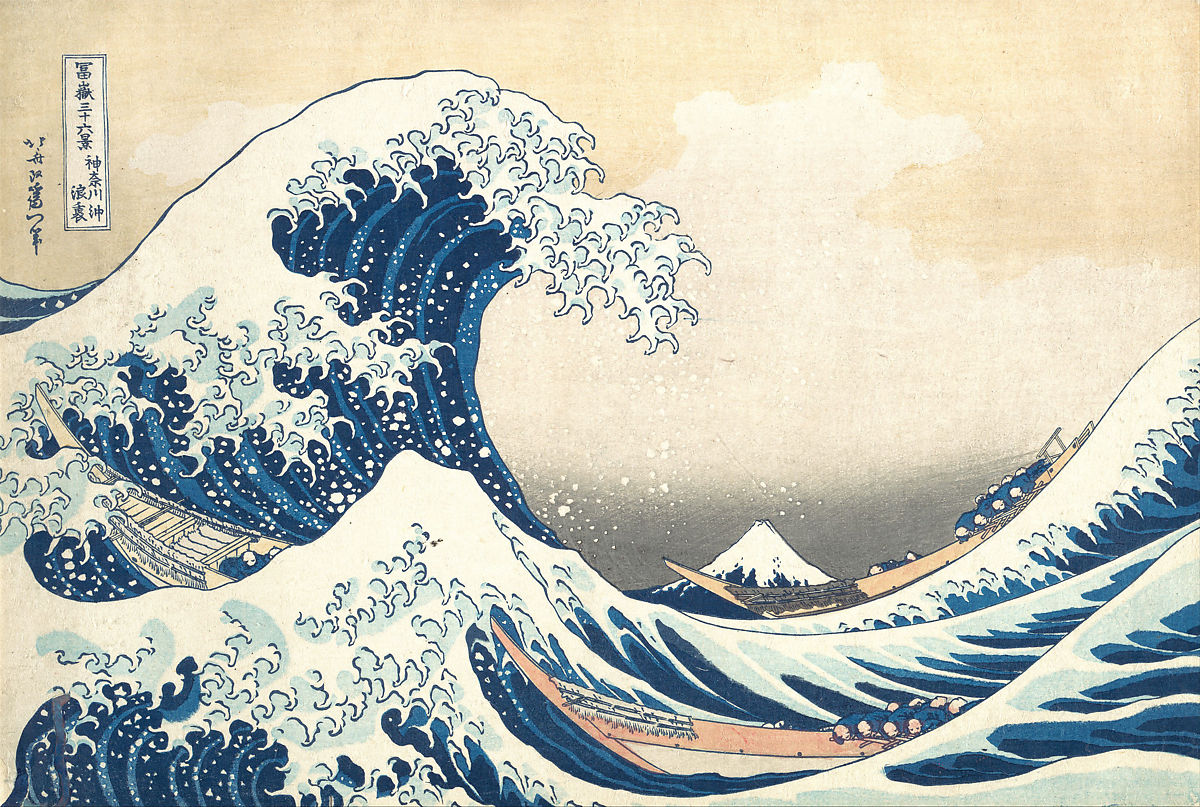
Above: Met Museum
The technique is still used today, as a way to capture a sense of heritage and transport the viewer to a time and place or more modern subject matter with an artisanal finish.
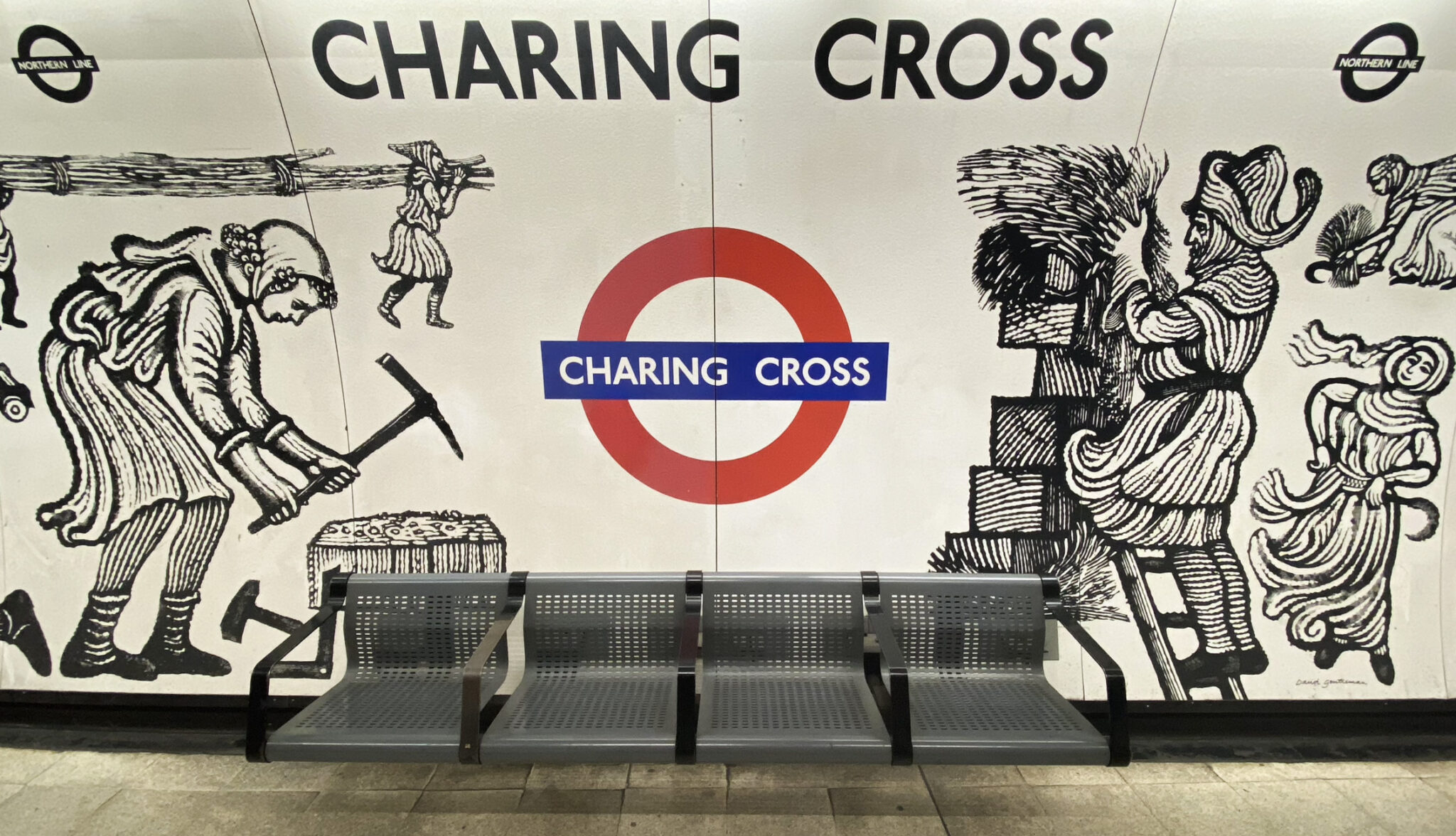
Above: Charing Cross Underground Station, London (UK)
Tools of the trade
These are pretty standard across all materials. Sharp chisels are used to carve an image into the surface; paper stocks bring a variety of qualities, such as colors, additional patterns, or textures; and an ever-growing range of water-based and oil-based inks adorn the designs with color.
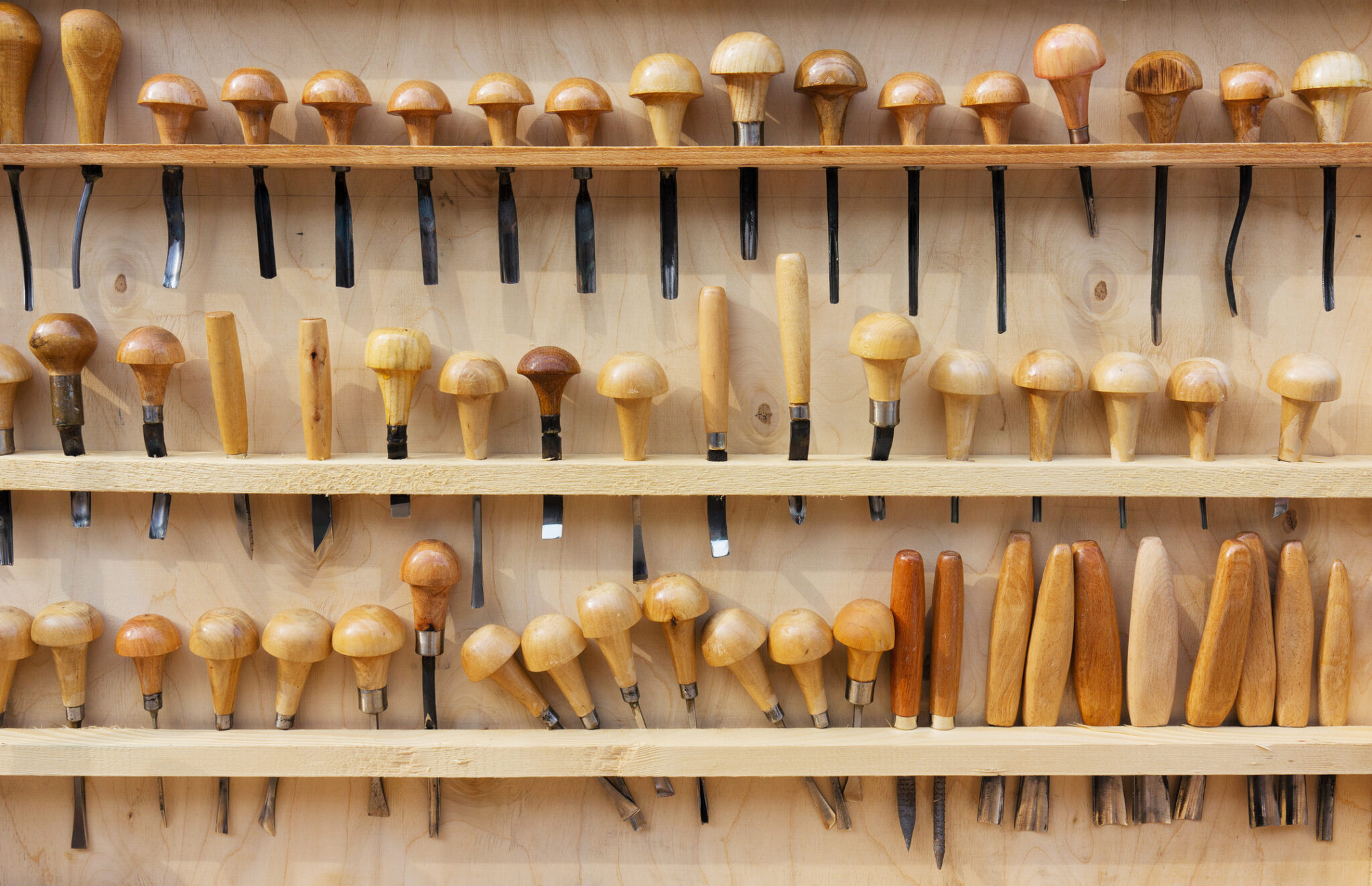
Above: A variety of woodcut chisels and gouges
For home printing and those just starting out, the back of a wooden spoon, a flat-based pebble, or a bamboo barren (circular tool with a flat face) is used for rubbing paper to effectively transfer ink. Professional printmakers would invest in a printing press, which applies even amounts of pressure to achieve consistent results.
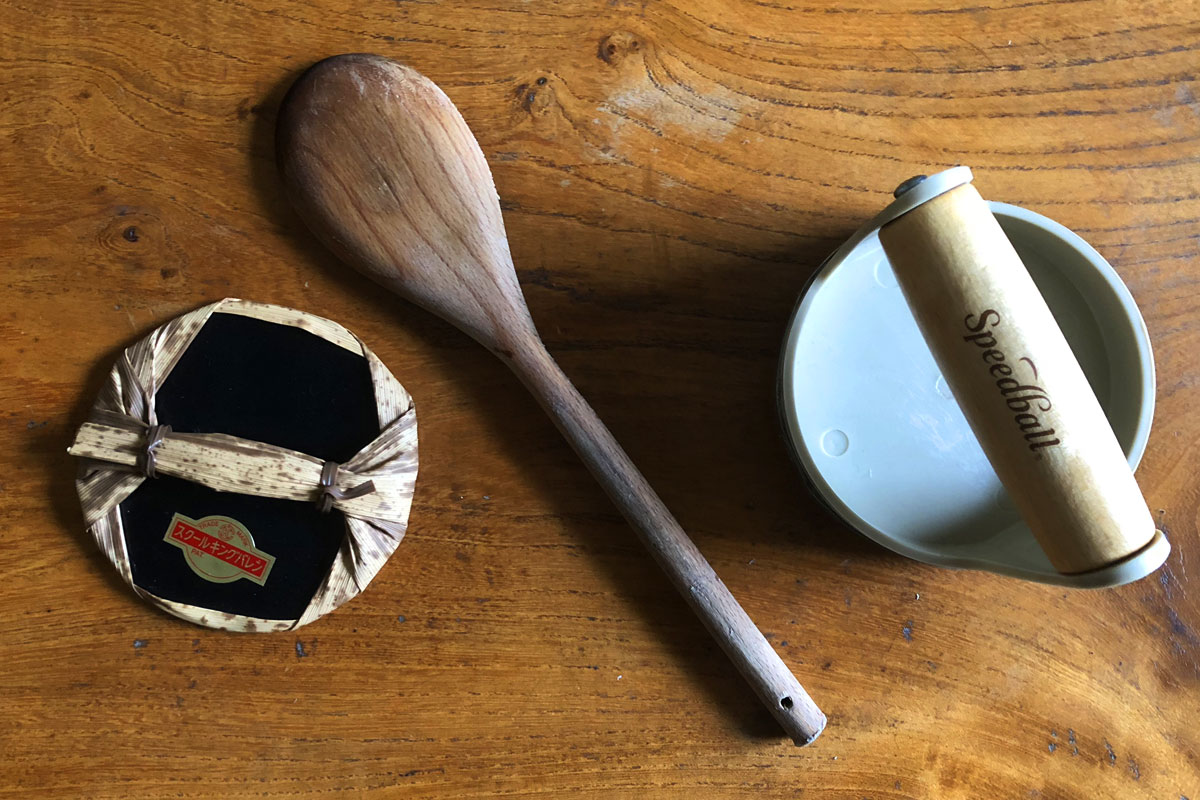
Above: From left to right, a bamboo barren, the inexpensive option of a wooden spoon, and a modern plastic barren. All three can be utilized for home printing.
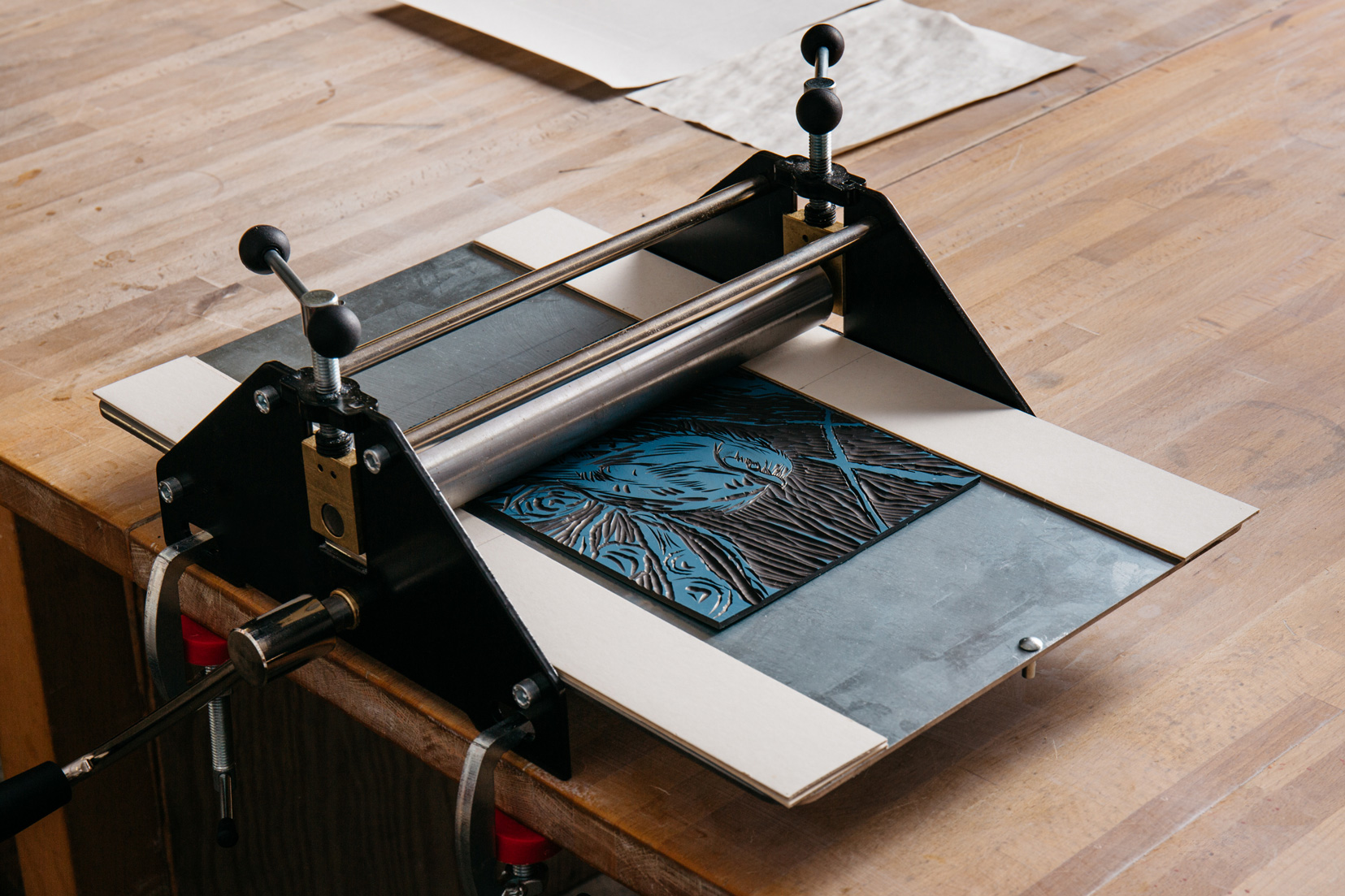
Above: A table-top printing press. The inked block is laid on the bed with a sheet of paper over it, the handle is then turned to roll the block under the metal cylinder. This applies even pressure and transfers the ink from the block to the paper to produce a print.
Digital and beyond
Though these blocks may be used to print off multiple copies and were the birthplace of reproductive design, each print is entirely unique. The smallest variations in ink application or pressure produce completely different results. This requires a lot of trial and error, but the payoff is a custom finish, texture, and a richness that is often missing in digital design today. All of these explorations in print and design continue their legacy and inform our design decisions and techniques today.
Utilizing digital tools like iPads, we can iterate designs more quickly and plan the carving process before making a single mark on the block. With advances in software, digital designers can also mimic the qualities seen in more manual design work (bottom left). Often a single tool, like the Apple Pencil for iPad, can emulate several tools within an app.
However, it is often very time-consuming to achieve realistic results, and the authentic process and results remain the best (bottom right).
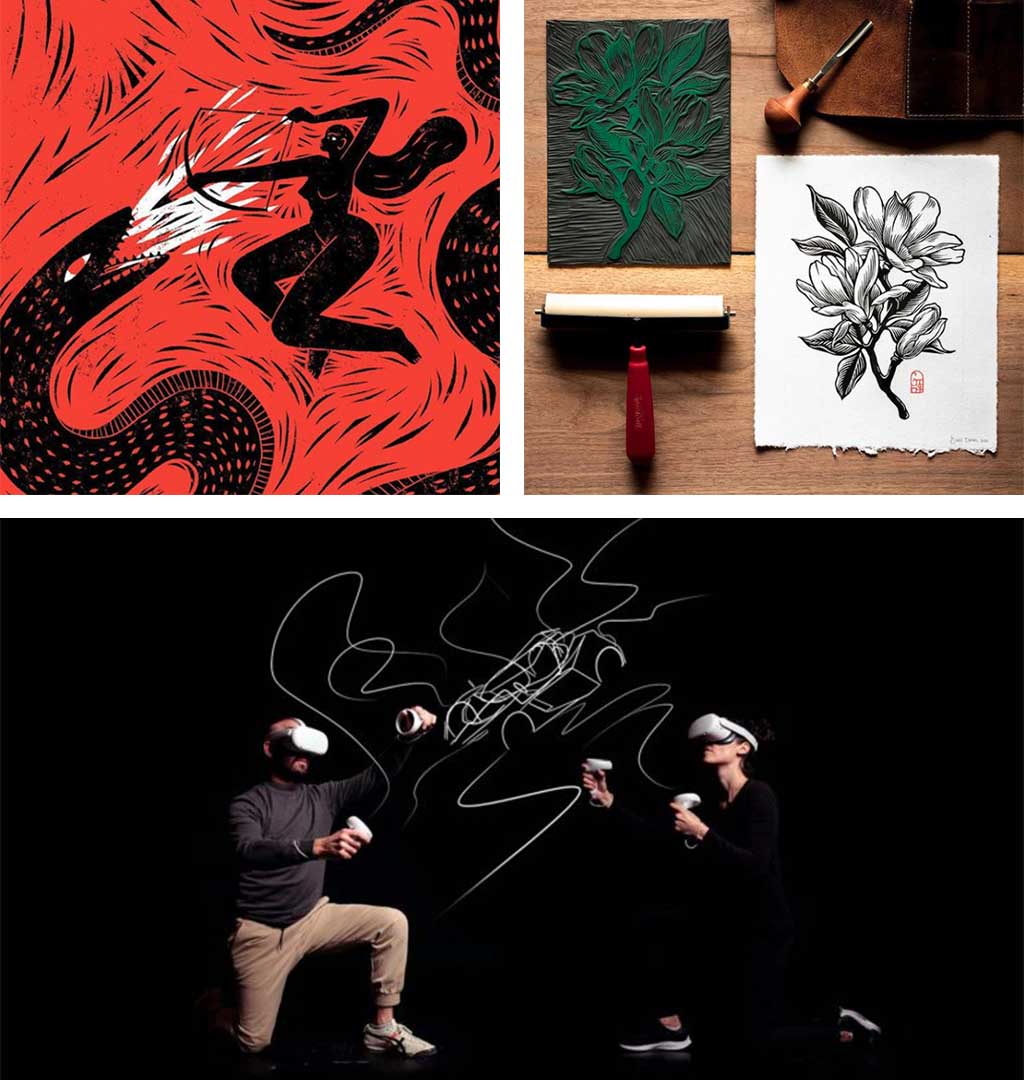
Above left: @shabloolim on Instagram, utilizing a digital painting program (Procreate) to mimic relief printing.
Above right: @studioesteldor on Instagram, a Magnolia print hand-carved with traditional tools.
Bottom: Gravity Sketch, available on the Oculus.
With AR and VR growing in popularity, a range of games, experiences, and drawing programs are being developed, too. These allow users to paint and even sculpt in a 3D space. Will we see printmaking in the metaverse? We’d like to think so.
Want to try it yourself?
Starter packs such as this are relatively inexpensive and give you everything you need to get going. We also recommend the book Linocut for Artists and Designers by Nick Morley. It is incredibly comprehensive, covering the entire process and approach to relief printing. This is perfect for novices but can still teach more experienced printmakers a trick or two.
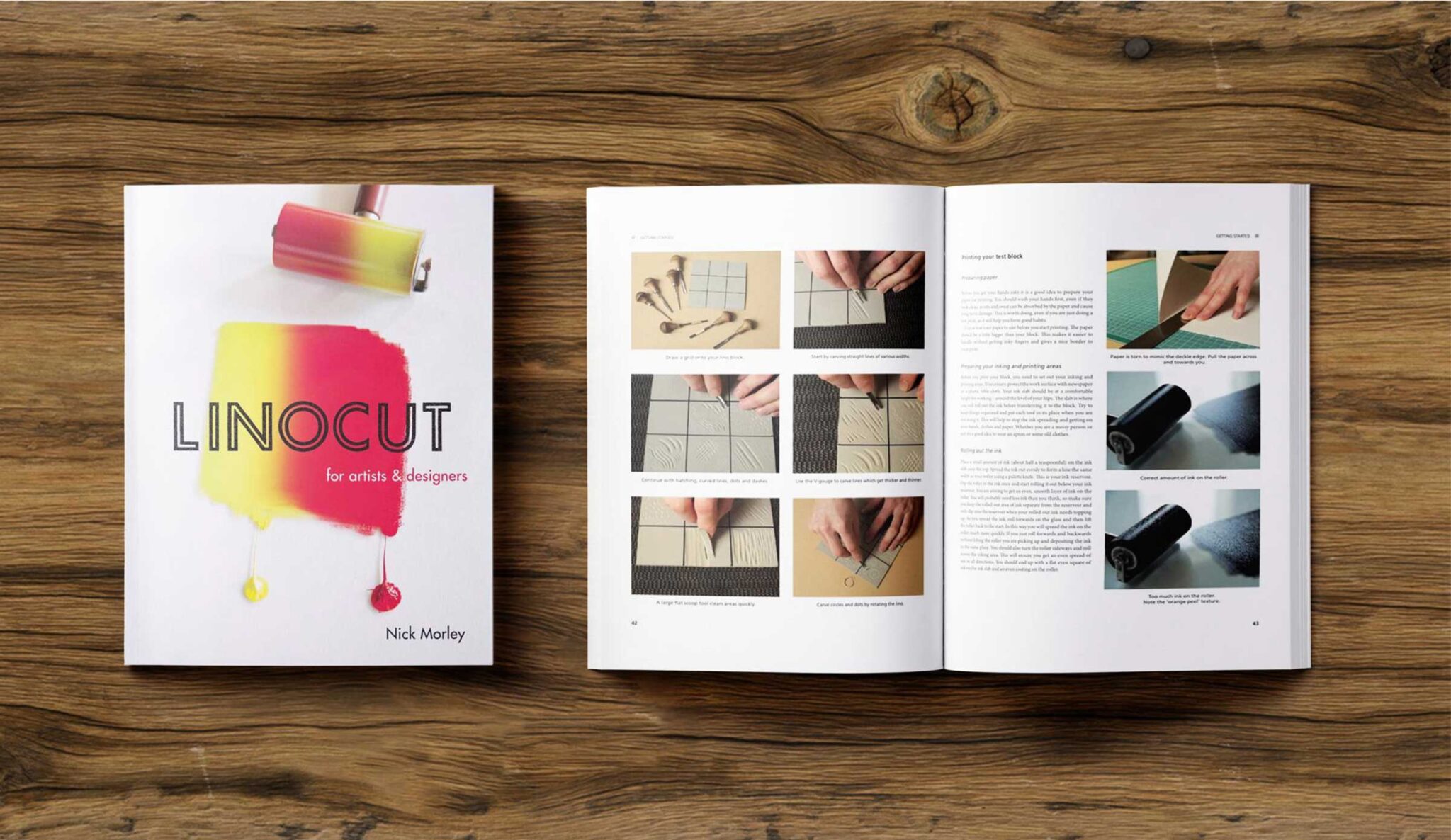
Above: Linocut for Artists and Designers by Nick Morley
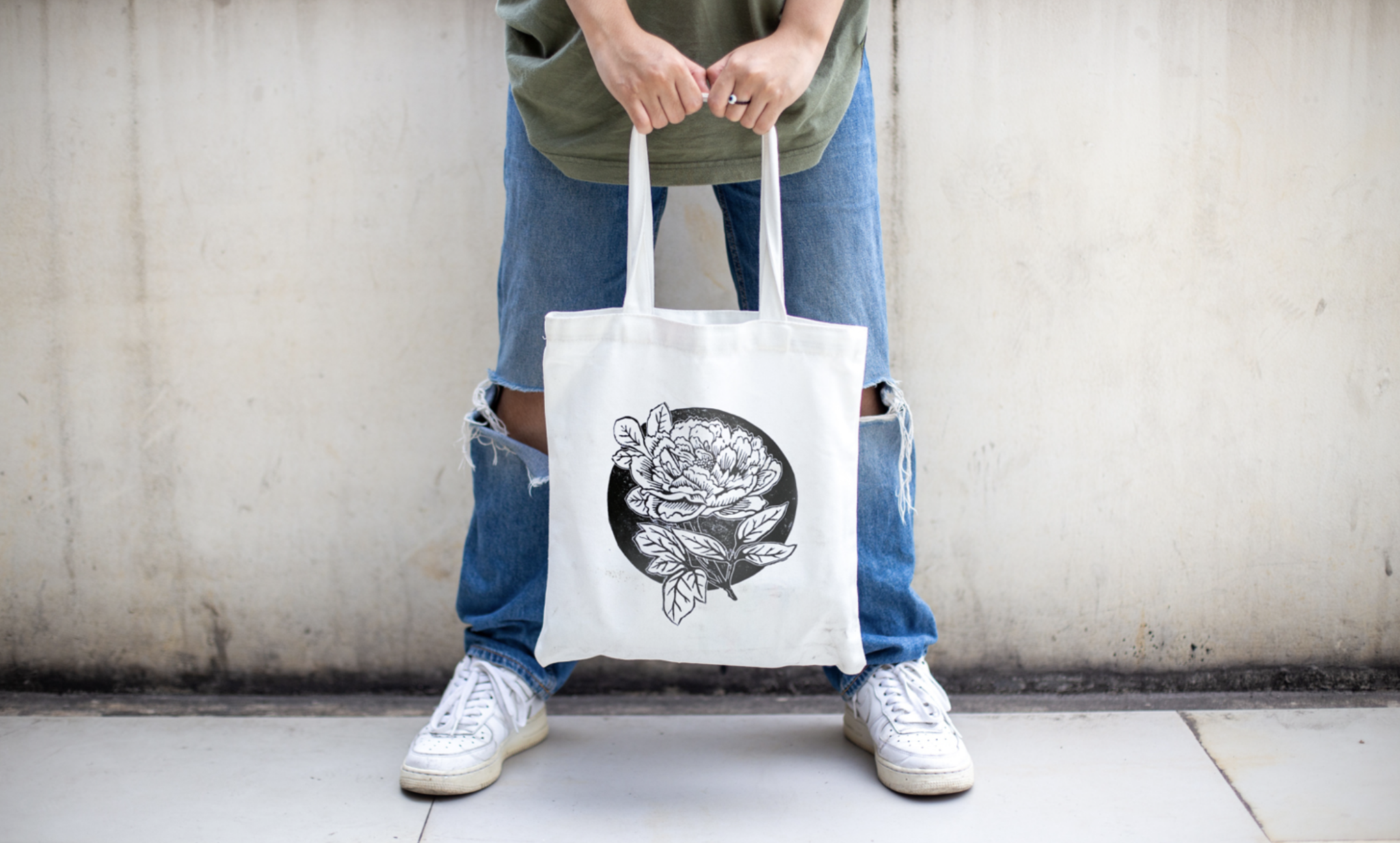
A part of our role as a creative agency is to be tirelessly curious and playful in our work — reaping the benefits of our experimentation and employing techniques, both new and old, to achieve the best results for our clients. We will continue to be advocates of relief printing and other artistic approaches as we venture forth into this digital age. We hope that you, the reader, also see the ongoing value in relief printing and may even be tempted to try it for yourselves.

